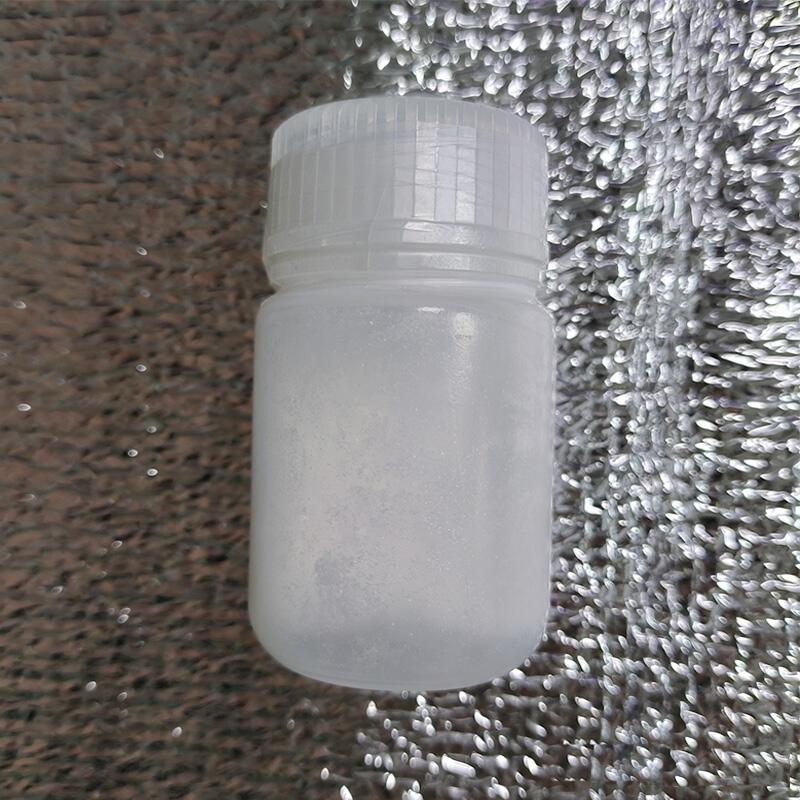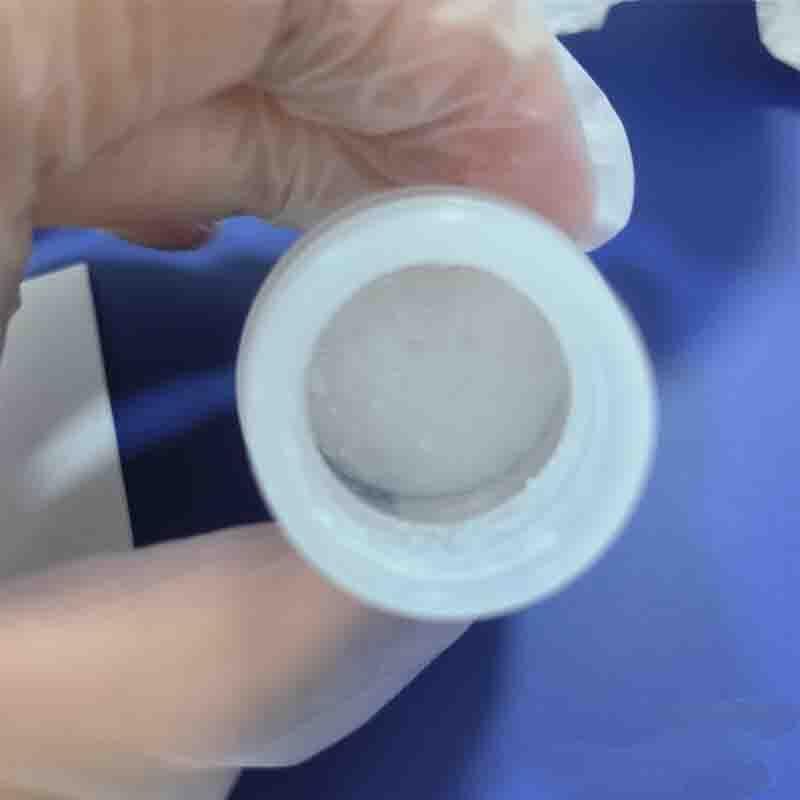-
Categories
-
Pharmaceutical Intermediates
-
Active Pharmaceutical Ingredients
-
Food Additives
- Industrial Coatings
- Agrochemicals
- Dyes and Pigments
- Surfactant
- Flavors and Fragrances
- Chemical Reagents
- Catalyst and Auxiliary
- Natural Products
- Inorganic Chemistry
-
Organic Chemistry
-
Biochemical Engineering
- Analytical Chemistry
-
Cosmetic Ingredient
- Water Treatment Chemical
-
Pharmaceutical Intermediates
Promotion
ECHEMI Mall
Wholesale
Weekly Price
Exhibition
News
-
Trade Service
This article is published with the permission of Professor Zhao Yingren, please do not reprint
Chronic hepatitis B virus (HBV) infection is a major global public health problem, it is estimated that at present, there are about 70 million cases of chronic HBV infection in
1.
In 2016, the WHO set the goal of eliminating viral hepatitis by 2030 as a major public health hazard, requiring a 90% reduction in new infections of chronic hepatitis B and a 65%
Chronic hepatitis B antiviral therapy can effectively inhibit HBV replication, reduce liver inflammation and necrosis, effectively block and reverse liver fibrosis and even early cirrhosis, thereby reducing complications associated with cirrhosis, reducing the mortality rate
In 2022, the Hepatology Branch of the Chinese Medical Association formulated the "Expert Opinions on Expanding antiviral treatment for chronic hepatitis B", and the key information is as follows:
Expanded screening: Expand population screening for hepatitis B surface antigens (HBsAg) to improve the sensitivity of HBV DNA detection and early detection of patients in need of
Aggressive treatment: expand indications for antiviral therapy and aggressively treat those at risk of potential disease progression
Proactive intervention: active intervention in patients with chronic hepatitis B who are receiving antiviral therapy for hypoviremia
Second, the new progress of HBV treatment drugs
Each stage of the HBV life cycle may be a therapeutic target for HBV, and more than 50 new drugs are in different stages of development, of which at least 25 drugs have completed Phase I clinical trials
Figure 1 Different classes of HBV treatment drugs
SiRNA (RNA silencing): Reduces the translational expression of various types of HBSAg by degrading HBV RNA
Improved delivery system (liposome nanoparticles→ N-acetylgalactosine), dual-target design, chemical modification to increase stability, specificity, and reduce immunostimulatory effects; The HBsAg effect of siRNA classes is enhanced, and the side effects are reduced, especially the cardiac safety issues
that have received early attention.
Table 1 SiRNA-based antiviral drugs in research
2.
Nucleocapsid inhibitors: interfere with the formation of viral nuclear shell proteins and inhibit viral replication
At present, in the research and development of anti-HBV, there are many such drugs, but the effect of combining with nucleoside (acid) analogues (NUC) and interferon still needs to be carefully considered, and the effect of reducing DNA and RNA is obvious, but the decline in HBsAg is limited
.
Table 2 Nucleocapsid inhibitors under study
3.
Virus entry inhibitors: NTCP inhibitors
Including myristylated lipopeptide (47 amino acids), Na+/taurine analogues, etc
.
The antiviral effect of virus entry inhibitors combined with pegylated interferons and nucleosides is certain, and it has advantages in blocking new infections, but the problems of elevated bilerate, elevated liver enzymes, and itching need to be concerned; Other HBV receptor blockers are worth noting
.
Table 3 Virus entry inhibitors in study
4.
HBsAg inhibitors (NAPs): Interferes with the production of HBsAg
NAPs mainly target the newly generated HBsAg in the endoplasmic reticulum and cytoplasm, and play a role in degrading HBsAg before emergence; The effect of NAPS is only to interfere with the release of HBsAg, and there is no obvious inhibitory effect on other aspects of HBV replication; The disappearance of serum HBsAg due to monotherapy for NAPs is not a true "clinical cure", and the dynamic changes in serum HBV DNA, HBV RNA, hepatitis B e antigen (HBeAg), and hepatitis B core-related antigen (HBcrAg) levels should be monitored comprehensively to evaluate their antiviral efficacy
.
Table 4 NAPs in research
5.
Antisense oligonucleotide (ASO): Targets and degrades mRNA to block viral protein synthesis
ASO is a rookie in the treatment of hepatitis B and has shown better antiviral and HBsAg effects
than siRNA.
In addition, ASO can activate TLR-3 and TLR-9 of non-parenchymal cells of the liver and exert immune clearance.
Table 5 ASOs in research
6.
Gene editing: ethical issues, potential carcinogenicity, etc.
may be the nodes that limit the application
Table 6 Drugs for editing viral genes in research
7.
Indirect antiviral drugs (IAA): Targeting the human immune system to attack the HBV virus
(1) Therapeutic vaccines:
Nearly 10 drugs that have entered Phase II clinical trials include CVI-HBV-002, GS-4774 and HepTcell
.
Enhances residual immune function and may only work in people who still have hepatitis B-specific immunity
.
(2) Immune checkpoint inhibitors:
As the results of the second stage of envolizumab (PD-L1 antibody, ASC22) show good safety, the HBsAg decline is ideal after combining with nucleoside (acid) analogue (NA); There are also multiple in stage I and preclinical stages;
However, PD-1 and PD-L1 are widely distributed, and the specificity of antivirals is worthy of attention, and some studies suggest that HBsAg is elevated
.
(3) Innate immune defense system:
Such as TLR-8 agonists, TLR-7 agonists, including GS9688, RG7854, RO7020531, etc.
into Phase II clinical trials;Plays a supporting role
in optimized populations (residual hepatitis B-specific immune function).
(4) Host action pathway:
Compounds that induce programmed cell death, including APG-1387 (Phase II clinical, AXA), CRV431 (Phase I, ContraVir)
(5) Monoclonal antibodies:
Neutralize HBsAg, such as GC1102 (HBsAg monoclonal antibody, Phase II clinical, Green Cross)
(6) Other drugs: such as TCR-T (engineered T cell receptor T cells)
Enhance host immunity by recruiting unexhausted T cells to clear liver cells containing cccDNA or integrating HBV DNA
IMC-I109V (T cell receptor), LT-V11 (T cell receptor)
Figure 2 summarizes the development idea for hepatitis B cure, namely sandwich therapy [NUC + direct antiviral (DAA) + IAA].
Figure 2 Research and development ideas for hepatitis B cure
3.Progress of predictors of HBV treatment
1.
Serum anti-HBc level
A Dutch study based on four global randomized controlled trials of patients with chronic hepatitis B screened patients receiving PEG interferon therapy and analyzed baseline anti--HBc levels in relation
to inflammation and interferon responses.
The results showed that serum anti-HBc levels were associated with tissue inflammatory activity, and higher anti-HBc levels were associated with good treatment outcomes
.
2.
HBsAg level and HBcrAg level when NA is discontinued
Professor Wei Lai's team included 12 hospitals with HBeAg-positive patients who met the criteria for discontinuation of drugs in China's Guidelines for the Prevention and Treatment of Chronic Hepatitis B (2015 edition) to look for predictors of HBsAg's disappearance after drug discontinuation
.
Results showed that patients with HBsAg ≤ 135 IU/mL (59.
2% vs 1.
3%, P<0.
001) or HBcrAg ≤3.
6 logU/mL (17% vs 5.
4%, P=0.
027) had a higher<b12> cumulative HBsAg disappearance rate at 24 months after discontinuation.
3.
Serum HBV RNA
HBV RNA is a direct downstream product of intrahepatic cccDNA, and Professor Sun Jian's team combined with its previous research to systematically introduce the molecular characteristics of serum HBV RNA and its application value
in clinical diagnosis, antiviral therapy-related prediction and liver cancer-related risk prediction.
Table 7 Molecular characteristics and potential clinical value of serum HBV RNA
The following issues remain to be resolved:
Specific molecular characteristics and biological functions of serum HBV RNA in different disease states;
Methods for quantifying serum HBV RNA need to be further standardized;
The correlation between serum HBV RNA and the development of HCC requires prospective clinical studies to verify
.
Progress in antiviral therapy for special populations
The clinical management process of chronic hepatitis B during pregnancy is shown in Figure 3
.
For the choice of antiviral drugs, tenofovir fumarate (TDF) or tibivudine (LdT) is recommended for treatment during pregnancy; TDF treatment is recommended for treated and resistant lamivudine (LAM) or LdT; If pregnant women have osteoporosis, kidney injury, or risk factors for kidney damage, propofol tenofovir fumarate (TAF)
may be chosen.
Figure 3 Clinical management process during pregnancy
Note: ALT, alanine aminotransferase
5.Summary
There is growing evidence to support the expansion of the antiviral indications for chronic hepatitis B, which have a significant cost-benefit ratio, and concerns about long-term antivirals need to be eliminated
through research evidence and publicity.
In terms of new drug development, antiviral therapy and immunomodulatory therapy that target the HBV life cycle are very promising therapeutic targets, sandwich therapy (NUC+DAA+IAA) will provide the possibility of hepatitis B cure, and predictable indicators after drug discontinuation can escort
the safe discontinuation of drugs.
In addition, there is growing evidence to safeguard
the safety and efficacy of antivirals in special populations.
Professor Yingren Zhao
Second-level professor, first-level chief physician, doctoral supervisor
Director of the Department of Infectious Diseases of the First Affiliated Hospital of Xi'an Jiaotong University
Chairman of Shaanxi Society of Infectious Diseases
Member of the Standing Committee of the Infectious Disease Society of the Chinese Medical Association
Vice President of Infectious Diseases Branch of Chinese Medical Doctor Association
Vice Chairman of the Committee on the Rational Application of Antibacterial Drugs of the Chinese Hospital Association
Director of Shaanxi Clinical Research Center for Infectious Diseases
He presided over 13 national-level projects such as the National Natural Science Foundation of China, the "Eleventh Five-Year Plan", "Twelfth Five-Year Plan" and "Thirteenth Five-Year Plan" major infectious disease prevention and control projects of the Ministry of Science and Technology of the People's Republic of China, obtained scientific research funds of 10 million yuan, achieved a series of research results, published more than 120 papers, including 87 papers in SCI, and won 1 first prize for provincial scientific and technological progress (the first person to complete it)
He took the lead in formulating China's first "Guidelines for the Prevention and Control of Mother-to-Child Transmission of Hepatitis B Virus in China (2019 Edition)"
based on evidence-based medical evidence.
Participated in the compilation of all paper and electronic textbooks of "Infectious Diseases" of the four major publishing houses; Associate Editor
of Emerging Infectious Diseases.
He has won the honors of "Advanced Individual" in the national fight against the new crown epidemic, Shaanxi Youth Science and Technology Award (2nd), "Excellent Communist Party Member" and "Top Ten Teachers" of Xi'an Jiaotong University
References: Chinese Medical Association, Journal of Chinese Medical Association, General Medicine Branch of Chinese Medical Association, et al.
Guidelines for Primary Diagnosis and Treatment of Chronic Hepatitis B (Practice Edition, 2020)[J].
Chin J General Practitioners, 2021, 20(03):281-289.







